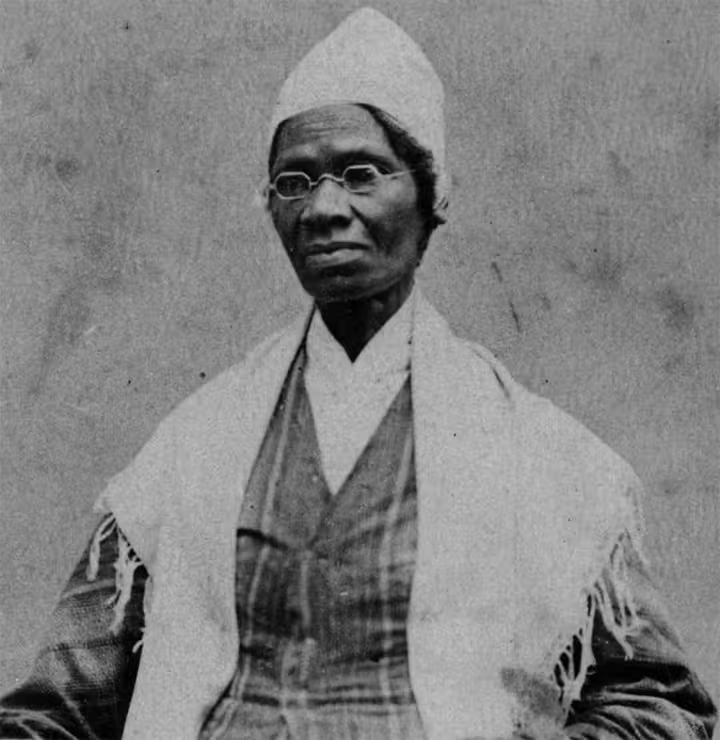In changing her name, Sojourner Truth was creating a new brand of her own - one centered around abolitionism and women's rights. Her lived experiences involving both of these topics and her passion for describing and discussing them in detail resonated with Americans all over the country. Though she was never given the opportunity to learn to read or write in her youth, she authored books through dictation once she became a free woman and sold them to further the promotion of her message, aka "the substance". [1] In 1864, Truth would copyright her name and likeness in Michigan state and create her famous slogan that would be printed on the cartes de visite [2] she would go on to sell and help popularize.
Though she built her brand over 160 years ago when the channels that existed were much different than those available to us in the modern era, Soujourner Truth leveraged many of the same core concepts of multi-channel marketing that are still in use today - even while enduring unthinkable hate and sexism. She - as did many African-Americans during this time - correctly believed that photographs were a very effective way to capture the humanity and dignity of the oppressed and help change American sentiments regarding the enslavement of human beings. Her brand was authentic, consistent, and memorable, and she had an unshakable conviction.
[1]. Truth's famous slogan "I sell the shadow to support the substance" uses an old throw-back moniker for photos. Before modern photography was invented, it was common to create silhouette art by drawing the profile outline of a person's head, neck, and upper torso and coloring the inside black (then referred to as a "shadow"), then setting that two-dimensional image against a white or ivory background. The name hung around and early photographs were still called shadows for many more years. The "substance" was the noble work Sojourner Truth was doing - the mission of equality for all people regardless of race or gender. She was very explicit in stating that she was selling her likeness to fund the continued promotion of her important message. Truth cleverly played off of one of the nascent photography industry's earliest promotional slogans ("Secure the shadow ere the substance fade.") to make her own tagline more palatable and familiar.
[2]. "Cartes de visite", patented in Paris, France in 1854, were small collectible 4.5" x 2.5" cards with early photographs printed on them. Their popularity spread to the US and in the 1860s, these "visitor cards" or "CdVs" were traded among friends and their guests. Albums containing these carefully curated collections were very fashionable in Victorian-era Britain. The cards were relatively inexpensive and rather common during the Civil War (many featured Union and Confederate soldiers and served as a means to update their families on the changes to their appearances) and perhaps only Abraham Lincoln had a more prevalent visage during this time in America than Sojourner Truth. Cartes de visite are often credited for helping to institutionalize the concept and virtues of photography around the world. They are now considered to represent one of the earliest forms of social media and were used to great effect as a marketing channel for Truth's efforts.
The technology has changed, but the concepts have not.
Sojourner Truth was a very active and captivating campaigner. She spoke at women's rights meetings, abolitionist conventions, religious gatherings, political events, and at a variety of miscellaneous smaller community engagements like state fairs and town halls. Modern parallels to these channels include webinars, keynote speeches, panel sessions, podcasts, and live streaming. Even without the internet, television, radio, automobiles, or telephones, Truth was able to spread her message using a multitude of channels and a relentless fervor for her important work.
Because it was not yet possible to record speeches, Truth had to constantly speak to as many people as she could to make an impact. The more people she could reach, the more would buy into her "product" - the message of equality that she hoped would begin to foster the graciousness in American minds to change the way they viewed women and slaves. Her devotion to the "business" of abolition and advocacy for women's causes consumed her and the stellar work ethic she possessed helped her message reach its destination and ultimately inspire the change she dreamed of.
Today, business owners have access to a plethora of modern tools to help amplify their brand's message. Webinars can be recorded, archived, and optimized. Speeches can be transcribed, digitized, and edited. Panel speakers can have personal microphones and the sessions can be broadcast live. Podcasts can be subscribed to, advertised and aired. Numerous channels have evolved - each with its own features and audience profile - to help amplify an aspiring company's name. Text messages and emails provide instant connection to people and devices like phones, tvs, and computers make your message easy for almost anyone to receive. Most of these things can be done at a very reasonable cost and at a very large scale.

